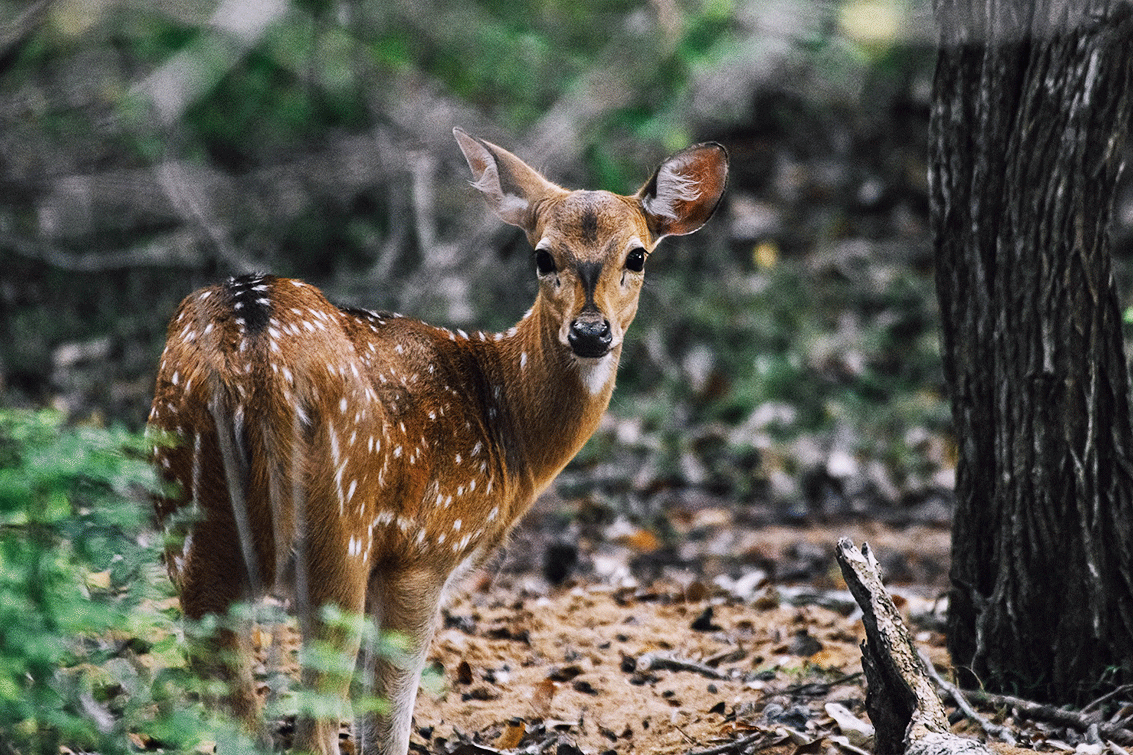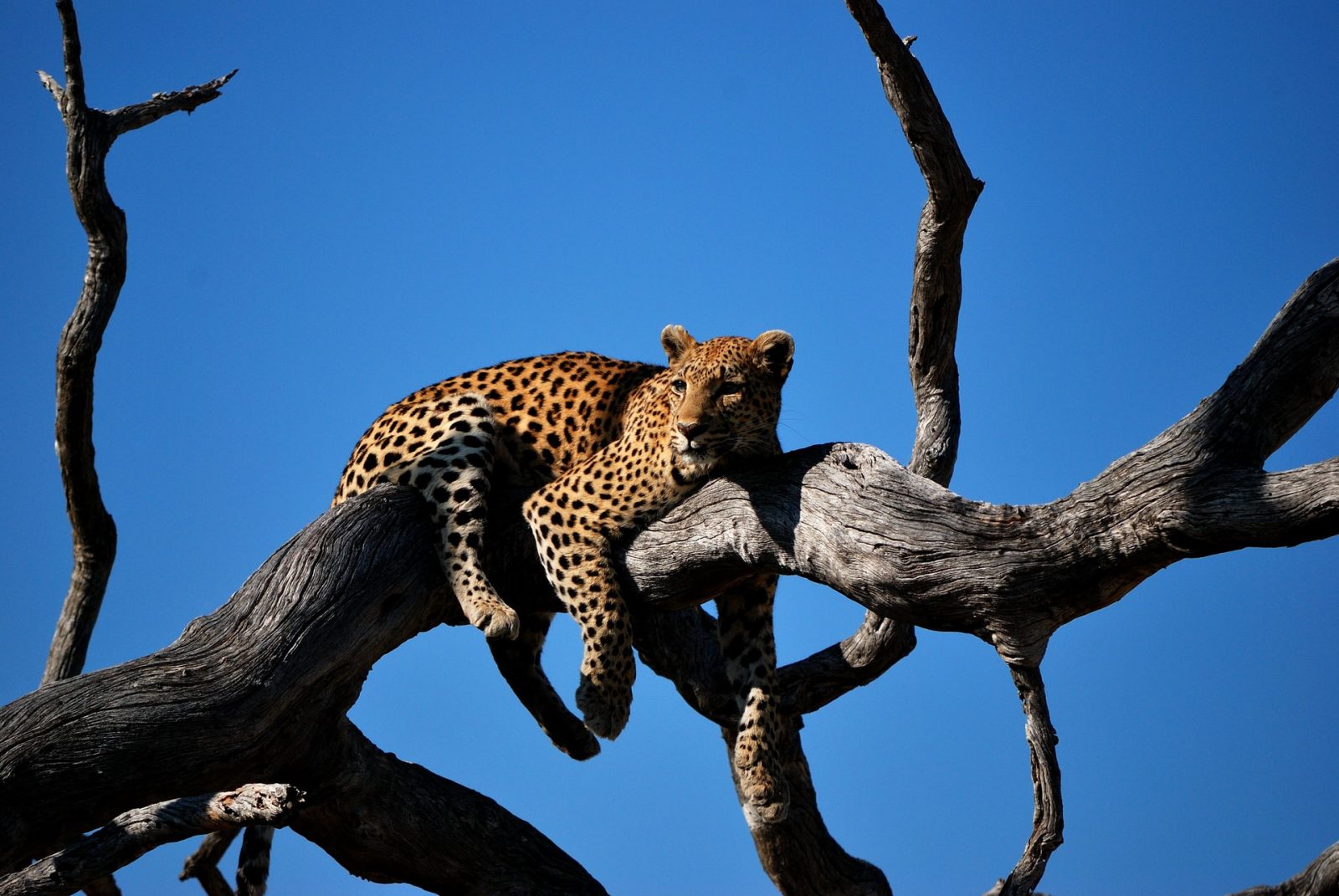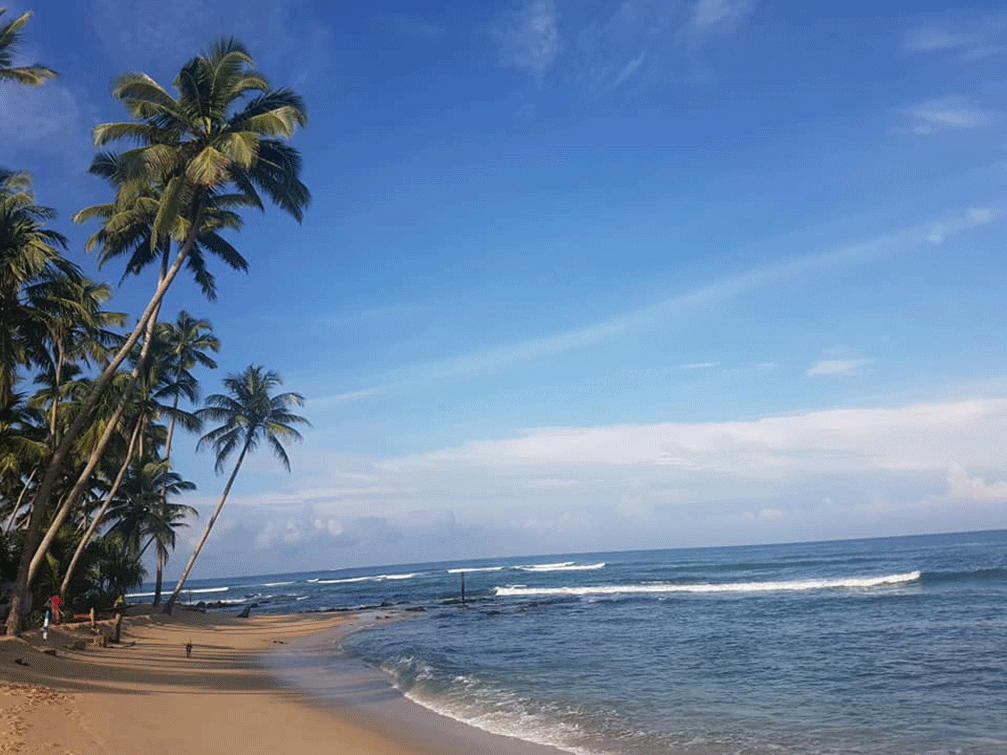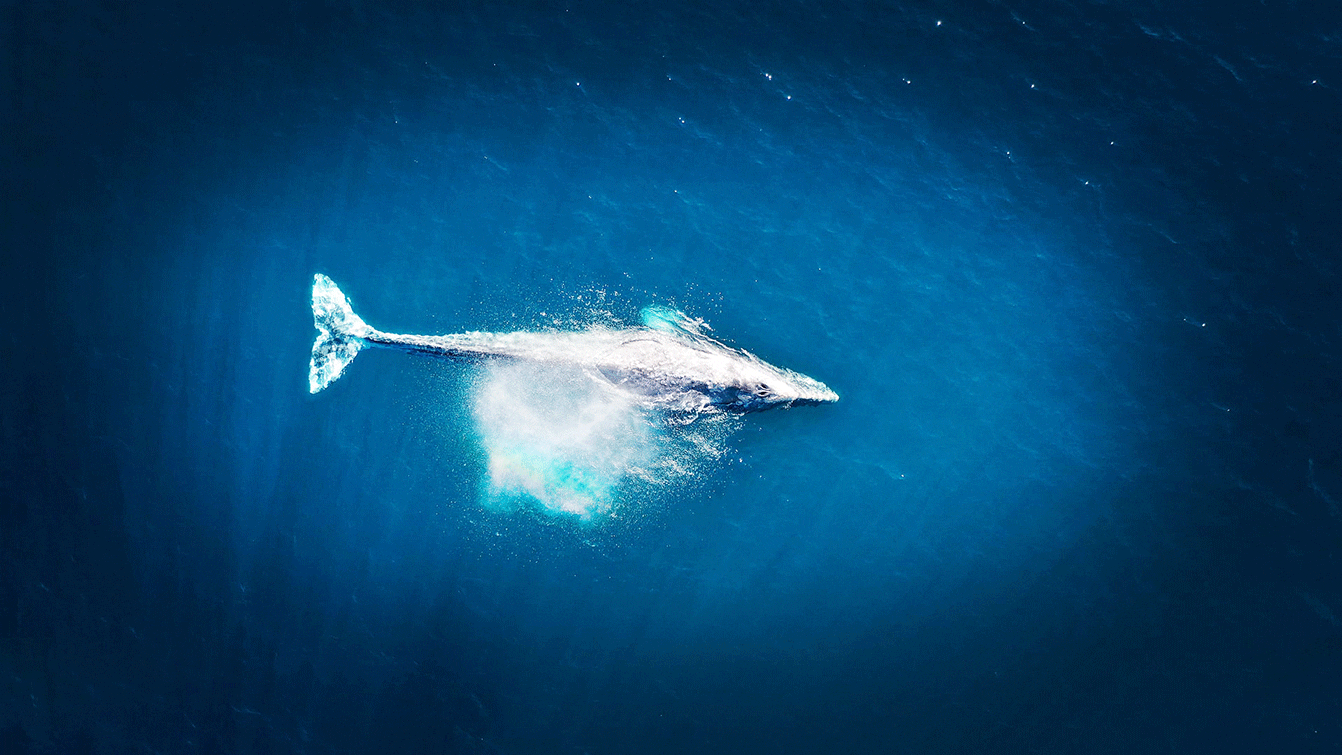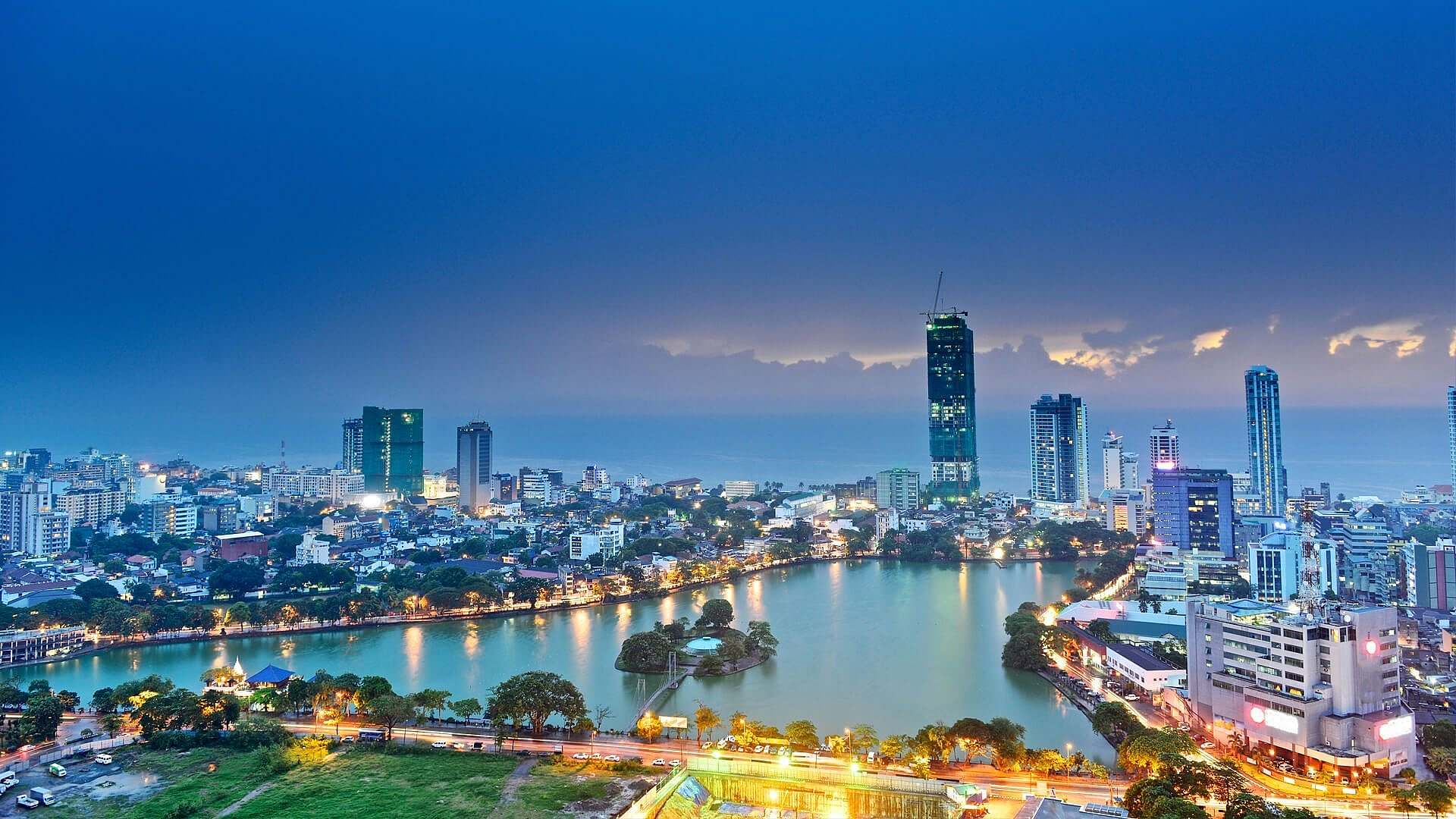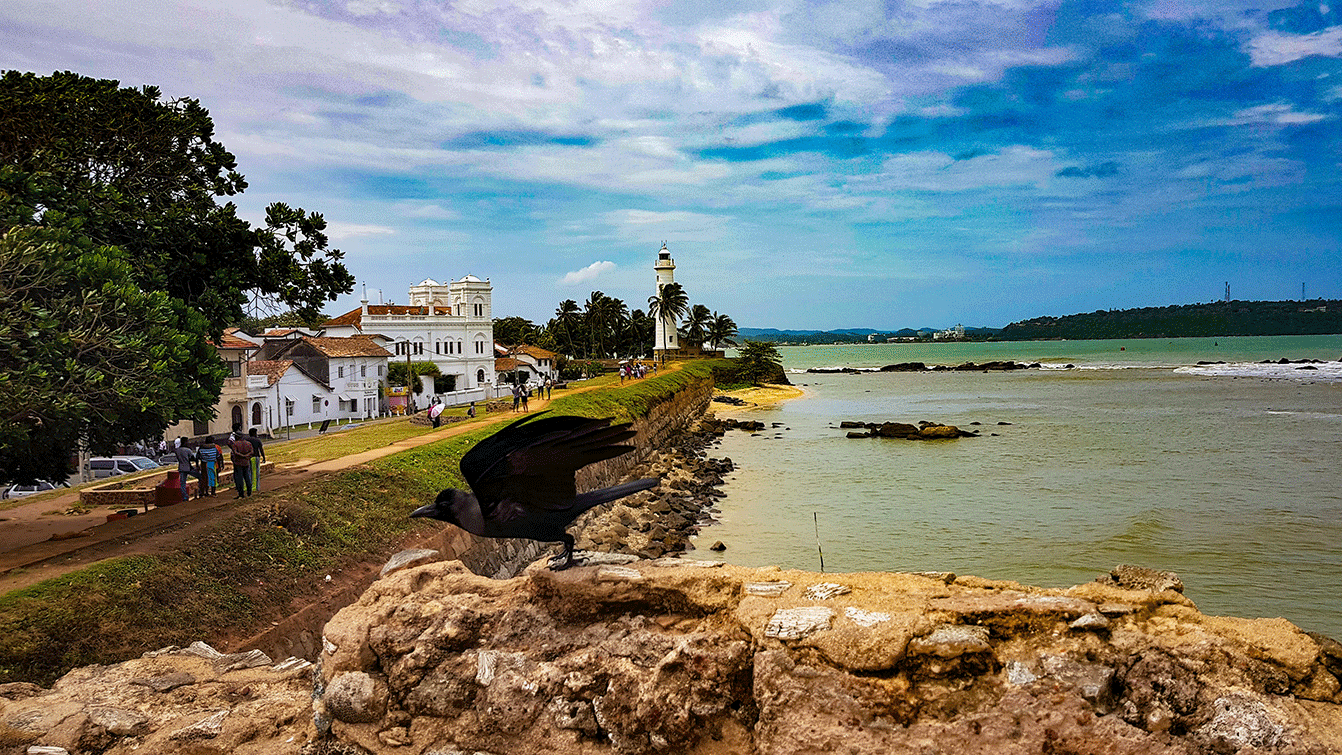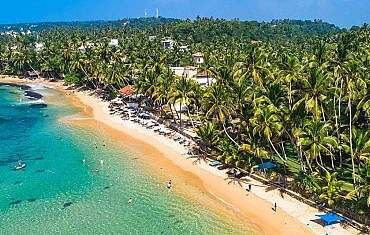Table of Contents
- Jungle Tours and Treks in Sri Lanka
- What to see on Jungle Tours and Treks in Sri Lanka
- What is the duration of the Jungle Tours and Treks in Sri Lanka?
- What is the best time for Jungle Tours and Treks in Sri Lanka?
- Exploring rainforests on Jungle Tours and Treks in Sri Lanka
- National parks and rainforests in Sri Lanka for jungle excursions
- What are the twelve best places for Jungle Tours and Treks in Sri Lanka?
- What are the primary variations of Sri Lankan jungle tours?
- Forests in Sri Lanka are ideal for jungle excursions and treks.
- Visiting Nuwara Eliya on Jungle Tours and Treks in Sri Lanka
- 1. Sinharaja rainforest excursions in Sri Lanka
- What sights should I expect to encounter during my Sinharaja jungle tour?
- 2. Exploring Yala National Park on Jungle Tours and Treks in Sri Lanka
- 3. Horton Plains National Park: Sri Lankan jungle excursions
- 4. Jungle Tours and Treks in Sri Lanka: Kitulgala Rainforest
- 5. Kandy jungle tours and excursions
- 6. The Knuckles mountain range
- What are the five most popular jungle excursions and treks in Kandy?
- What is the best time of the year to go on Jungle Tours and Treks in Sri Lanka?
- A few additional links that may be beneficial
- Jungle excursion of Sinharaja
Jungle Tours and Treks in Sri Lanka
The majority of the national parks and rainforests in Sri Lanka, including Yala National Park, Kitulgala Rain Forest, and Sinharaja Rainforest, are off-the-beaten-path tourist destinations. Consequently, Jungle Tours and Treks in Sri Lanka are primarily focused on these areas. Visitors who are interested in wildlife, eco-travel, photography, and cultural immersion frequently go on the Sri Lanka jungle trek. For instance, the Sri Lanka 4-day southern tour encompasses numerous wildlife experiences, including the Yala safari and whale viewing off the southern coast of Sri Lanka.
What to see on Jungle Tours and Treks in Sri Lanka
Travelers will have the chance to observe a diverse array of tropical animal species, plants, and trees during their Sri Lanka jungle excursions. In addition to the extraordinary wildlife encounters, travelers can acquire knowledge about ancient native cultures during Sri Lankan jungle excursions and treks, particularly in areas such as Dambana, where aborigines continue to reside.
During your Sri Lankan jungle tours, travelers have a high likelihood of encountering a variety of animals, including elephants, leopards, buffaloes, bears, crocodiles, and more. Simultaneously, travelers encounter a diverse array of flora and fauna during the Sri Lanka Jungle Tours, including a variety of trees and plants, geckos, orchids, scorpions, and birds. Thus, the Sri Lankan jungle excursions, which take place in national parks, rainforests, and nature reserves, as well as through captivating mountain forests in high-altitude regions, are an unforgettable experience in your lifetime.
What is the duration of the Jungle Tours and Treks in Sri Lanka?
The budget and amount of time available for the trip have a big impact on how long the excursions in the Sri Lankan jungle last. From one day to seven days, tour companies like Seerendipity Tours organize jungle tours in Sri Lanka. Thus, tours enable travelers to explore a variety of national parks and rainforests during their itinerary. We intend to incorporate historical monuments, beaches, UNESCO World Heritage Sites, and other attractions into certain jungle excursions. Nevertheless, the duration of the tour increases in tandem with the number of activities on the journey.
What is the best time for Jungle Tours and Treks in Sri Lanka?
Generally, the summer monsoon or northeast monsoon, is the optimal time of year to visit the Sinharaja rainforest, which spans from October to April. The monsoon, which manifests itself in two distinct phases, has a significant impact on Sri Lanka’s weather. 1) The north-east monsoons, which occur from October to November, and 2) the south-west monsoons, which occur from April to October. The southern and western regions of Sri Lanka are home to the majority of rain forests, including the Sinharaja rainforest. The rainy zone of Sri Lanka is defined as the southern and western regions, which receive substantial rainfall throughout the year. Heavy rainfall is a frequent occurrence in the southwest region of Sri Lanka, particularly during the southwest monsoon. Consequently, it is advisable to visit Sri Lanka between October and November if you are interested in exploring the island’s rainforests during a jungle tour. Moreover, it is imperative to establish your itinerary on the western or southern coast to guarantee consistent daily sunlight.
Exploring rainforests on Jungle Tours and Treks in Sri Lanka
Although tropical rainforests such as the Sinharaja and Knuckles occupy only 2% of the Earth’s surface, they remain the habitats of over 50% of the world’s species. That is an impressive species-to-space ratio!
In order to be classified as a rainforest, a forest must satisfy specific criteria, such as occupying land in the tropics, being dense and verdant, and having a thick upper canopy. The canopy layer and the emergent layer are the two primary components of the upper foliage. The upper canopy is typically dense, preventing sunlight from entering and trapping moist air between the floor and the canopy. The rainforest’s frequent and sudden heavy rainfall are another distinctive characteristic. Rainfall in Sri Lanka’s rainforests averages approximately 5000 millimeters annually.
The primary reason for the term “rainforest” is the dampness and humidity that typically permeate these enigmatic regions throughout the year. Rainforests possess an extraordinary, distinctive microclimate that facilitates the migration of all living organisms from the jungle floor to the canopy. Consequently, the biodiversity of the rainforest is consistently exceptional.
National parks and rainforests in Sri Lanka for jungle excursions
Although tropical rainforests such as the Sinharaja and Knuckles occupy only 2% of the Earth’s surface, they are the habitats of over 50% of the world’s species. Consequently, Sri Lanka Jungle Tours are most suitable for prominent rainforests.
In order to be classified as a rainforest, a forest area must satisfy specific criteria, such as occupying land in the tropics, being dense and lush, and having a thick upper canopy. The canopy layer and the emergent layer are the two primary components of the upper foliage. The upper canopy is typically thick, which prevents sunlight from entering and maintains moist air “trapped” between the floor and the upper canopy. The rainforest’s frequent and sudden heavy rainfall are another distinctive characteristic. Rainfall in Sri Lanka’s rainforests averages approximately 5000 millimeters annually.
The primary reason for the term “rainforest” is the dampness and humidity that typically permeate these enigmatic regions throughout the year. Rainforests possess an extraordinary, distinctive microclimate that facilitates the migration of all living organisms from the jungle floor to the canopy. Consequently, the biodiversity of the rainforest is consistently exceptional.
What are the twelve best places for Jungle Tours and Treks in Sri Lanka?
- Sinharaja Rainforest
- Yala National Park
- Horton Plains National park
- Kitulgala Rainforest
- Kandy
- Knuckles mountain range
- Udawattekele sanctuary
- Minneriya National park
- Ecopark
- Wilpattu National Park
- Habarana
- Sigiriya
- Bentota
- Madu river
What are the primary variations of Sri Lankan jungle tours?
- Jeep excursion in Sri Lanka
- Jungle trekking in Sri Lanka
- Tours by boat
Forests in Sri Lanka are ideal for jungle excursions and treks.
Sri Lanka is home to numerous national parks and forests. There are more than twenty national parks, wildlife sanctuaries, and rainforests, each of which contains a substantial collection of flora and fauna.
Certain ecosystems appear to emerge from the pages of a collective traveler’s imagination. These are the enigmatic and thrilling realms of Kipling, Stevenson, and Burroughs. Certainly, this has a complex colonial history, characterized by anthropomorphized animals and a straightforward colonialist perspective on the indigenous human inhabitants of these stunning and somber landscapes.
Nevertheless, a Sri Lanka jungle tour through any of these classic rainforests is guaranteed to reawaken your inner explorer as you pursue the truth beyond the stories and create your own adventure, despite the aforementioned.
Visiting Nuwara Eliya on Jungle Tours and Treks in Sri Lanka
The landscape along the highway from Kandy to Nuwara Eliya is breathtaking, featuring cascading waterfalls, streams, tea plantations, forests, and mountains that are adorned with greenery. At the outset of the journey, the landscape may not be particularly picturesque; however, as the travelers ascend the hilly road and reach a higher elevation, they are met with breathtaking views. At the most elevated point of this route, Mount Pidurutalagala, travelers can observe the island’s greatest mountain and the highest point of Sri Lanka, which is 1800 meters above sea level. Tea plantations of varying sizes surround the mountain.
The interior of Sri Lanka’s hill country is characterized by a dramatic landscape that includes cascades, patched forests, vegetable plots, tea plantations, and mountains. The region is home to numerous trekking routes and hiking paths. The tea plantation offers a variety of exceptional trekking and hiking routes that are accessible throughout the mountains. The two primary trekking and mountaineering destinations in Nuwara Eliya are the Horton Plains National Park and the Galway Forest.
Nuwara Eliya is a small and relaxed town; as a result, there is not much activity in the areas of retail, fine dining, discos, and casinos. The majority of Nuwara Eliya, particularly the area surrounding Gregory Lake, is characterized by a strong colonial influence. Numerous colonial residences are situated in the vicinity of Gregory Lake, the majority of which have been converted into hotels. Wealthy planters built these mansions in the early 18th century, which feature distinctive English architecture. Following Sri Lanka’s independence from the British monarchy in 1948, the affluent planters transferred all of their assets to the local population and departed the country.
1. Sinharaja rainforest excursions in Sri Lanka
Tourists are drawn to the Sinharaja rainforest throughout the year, as it offers a variety of activities, including jungle trekking, bird viewing, and kayaking. For instance, you can take part in the year-round, private Sinharaja rainforest tour from Colombo with one of our nature guides. Thus, discover additional information regarding the Sinharaja rainforest tour, which spans one day.
The Sinharaja rainforest tour is available for booking as either a one-day tour from Colombo or as a two- to three-day rainforest exploration excursion. Thud, the latter provides a comprehensive understanding of the forest’s fauna and flora. Therefore, these excursions are bookable from a variety of locations, including hotels in the hill country, as well as from the majority of coastal resorts on the western and southern coasts and from Colombo.
The extensive endemic fauna and flora of the Sinharaja Forest Reserve make it a paradise for a Sri Lanka jungle excursion. Birds, both migratory and resident, congregate in the canopy, particularly between December and April. Consequently, it is imperative for bird enthusiasts to embark on a jungle excursion in Sinharaja. Thus, Sri Lankan jungle excursions are included in Sri Lanka nature tours and Sri Lanka bird-watching tours. Thus, Sri Lankan jungle treks are occasionally incorporated into adventure vacations.
The Sinharaja rain forest is the first thing that comes to mind when the term “Sri Lanka jungle tours” is mentioned, as it is the most prominent rain forest in Sri Lanka. Simultaneously, there is no other forest on the island that can match the Sinharaja rain forest in terms of its biodiversity and size. The Udawattakele Sanctuary, Horton Plains National Park, and Knuckles Rain Forest are among the numerous locations that are suitable for a jungle excursion in Sri Lanka. Nevertheless, the Sinharaja rain forest is the preferred choice of most travelers due to its abundance of flora and fauna, as well as its feasible access.
Researchers and scientists who are conducting an endless number of projects to identify new organisms and new species are still emerging from the Sinharaja rainforest. Sinharaja serves as a reminder that there are regions that remain unexplored and unspoiled.
The Sinharaja rainforest, which comprises 118425 acres and extends across Sabaragamuwa, the southern and western province of Sri Lanka, is the largest rainforest on the island and the most ecologically diverse forest in Sri Lanka. Thus, it is home to numerous thousand species.
Sinharaja-based jungle tours in Sri Lanka have been accessible for an extended period of time; however, they have experienced substantial growth in prominence over the past decade. Although it is a double-edged sword, the jungle can gain more recognition and raise awareness of the plight it is confronting as a result of the increased number of tourists. However, it can also result in the emergence of numerous new problems.
The excursions to the Sinharaja rainforest are a chance to emphasize the forest’s threats and inform visitors of the ways in which they can assist. Travelers can begin to contribute to this objective by ensuring that their visits to this fragile ecosystem are as sustainable as possible.
The Sinharaja rainforest is best explored by trekking through the forest, and there are numerous options available, ranging from a few kilometers to many dozens of kilometers.
What sights should I expect to encounter during my Sinharaja jungle tour?
- Rainforest of Sinharaja
- Dooli Ella (waterfall)
- Aranuwa Upper Waterfall
- Aranuwa Lower Waterfall
The aforementioned locations are classified as “important places to visit in Sinharaja” and are situated within the rainforest’s boundaries. Thus, despite this, there are a multitude of other captivating destinations within the Sinharaja rainforest.
2. Exploring Yala National Park on Jungle Tours and Treks in Sri Lanka
The visit to the Sinharaja Rain Forest is in stark contrast to the Sri Lanka jungle excursion at Yala National Park, which spans two days. The two forest Tours are distinct in numerous respects, including the fauna and flora that are encountered during the tour as well as the experience of traveling through the forest. It is possible that you believe Yala is also a Sinharaja, a dense, pristine forest. Yala is home to a sizable number of creepers, plants, and trees; however, it is not as concentrated as the Sinharaja forest. Yala is classified as a dry-zone forest. The rainfall is significantly lower than in Sinharaja.
Yala is the most frequently visited jungle in Sri Lanka for wildlife jeep excursions. Every day, thousands of travelers embark on Yala jeep excursions. Thus, Yala Safari is a significant source of income for the local community and is one of the most popular attractions in Sri Lanka’s southern province.
A leopard excursion is one of the distinctive travel experiences that Yala provides to its visitors. The primary objective of each visit to Yala National Park is to observe the large number of carnivores. Leopards have never been so accessible to observe in any other location on Earth as they are in Yala. In comparison to any other national park on the globe, Yala boasts the highest density of leopards.
In order to participate in the Sri Lanka jungle excursion at Yala, tourists must obtain an entry permit and rent a jeep. Yala Safari is offered in two varieties: a full-day jungle excursion and a regular Yala jungle tour. A typical jungle excursion lasts approximately three hours, while a full-day jungle tour lasts eight hours.
We recommend that you participate in a full-day jungle excursion to guarantee that you do not miss the opportunity to observe a leopard. Leopards may be observed during a standard jungle excursion; however, there is no guarantee of such animals as elephants, crocodiles, deer, wild bison, jackals, and mungos in the park.
3. Horton Plains National Park: Sri Lankan jungle excursions
Wilbert Horton, the British governor of Ceylon from 1831 to 1837, encountered an unknown world of shifting fog that intermittently filtered sunlight and obscured and revealed small indigenous settlements as he entered the Mahaeliya (later named the Horton Plains) in search of Ratemahattaya, the local administrative officer in the area. Horton Plains National Park is situated on a plateau that is situated between the second- and third-highest mountains in Sri Lanka. The jungle’s elevation ranges from 1,200 to 2,300 meters.
There are only a few isolated areas of cloud forests or mountainous terrain in Sri Lanka. Horton Plains National Park is the largest of its kind, and the majority of other mountain forests are significantly smaller. The term “cloud forests” is derived from the fact that these woodlands are enveloped in fog for the majority of the day. The bank of fog remains at the canopy level, and it is only possible to visit them during midday. Travelers can gain a distinctive perspective on the uniqueness of these rainforests by walking directly among the canopy at Horton Plains, the most exceptional location in Sri Lanka to experience cloud forests. The majority of Sri Lankan tour itineraries are designed for nature enthusiasts and adventurers, including Horton Plains.
4. Jungle Tours and Treks in Sri Lanka: Kitulgala Rainforest
Participate in a variety of activities, including caving, bird viewing, whitewater rafting, abseiling waterfalls, jungle trekking, and camping. Thus, Sri Lankans regard the rainforest of Kitulgala as their playground for adventure. Nature aficionados and adventure seekers will discover numerous captivating activities in the tranquil countryside. Thus, tourists are drawn to Kitulgala’s rainforest regardless of the season. The Kitulgala excursion, therefore, a private rainforest tour with one of our nature guides, is available for a one-day departure from Colombo. Thus, the itinerary encompasses a variety of captivating activities, including jungle trekking, bird viewing, and whitewater rafting on the Kelaniya River.
The hanging bridge, which is situated a few kilometers north of Kitulgala town and is adjacent to a rubber plantation, is a convenient starting point for traversing the Kelaniya river and entering the Rainforest. Thus, it was constructed during the English colonial era (1796–1948). The village, which is home to a small number of families, is situated immediately following the suspended bridge. In order to access the rainforest, therefore, travelers must traverse the village. Thus, a guided jungle excursion in the rainforest typically lasts for two hours.
5. Kandy jungle tours and excursions
Kandy, a large jungle and tea plantation, encircles the hilly metropolis of Sri Lanka. Thus, Kandy is home to numerous rivers, cascades, and mountains. Kandy is conveniently situated near several of Sri Lanka’s most prominent trekking destinations, including the Udawattakele Sanctuary and Hantana. Udawattakele is a popular destination for bird viewing and jungle tours in Sri Lanka, whereas Hantana is a popular trekking site.
We highly recommend that individuals who are interested in experiencing a memorable trek schedule a one-day trekking trip to Hantana. Thus, it boasts a unique landscape and trekking conditions that are vastly different. Therefore, the Hantana mountain range is situated in the western region of Kandy City and extends to the beaches of the west coast.
The trekking route is replete with trees and plants, and it provides a delightful walking experience in a mystical region that is characterized by deep gorges, mountain ridges, abundant forests, tea plantations, a fertile valley of vegetables, eucalyptus plantations, and isolated hamlets. While the terrain may facilitate more leisurely trekking, it presents numerous rewards and challenges as well.
The Hantana Plateau, a captivating region of highland meadows, is particularly adorable during the rainy season (April to November), when wildflowers blanket the entire area. Thus, the Hantana is still characterized by hidden gorges, dense forests, peaks, and breathtaking small hamlets, despite being less strenuous than many other trekking routes in Sri Lanka’s hill country.
6. The Knuckles mountain range
The Knuckles Mountain Range has been designated a natural world heritage site by UNESCO. This is one of the last remaining forest sections in the central mountain range. Thus, Knuckles, the largest forest in the central province of Sri Lanka, is included in numerous Sri Lankan nature excursions, such as hill country tour itineraries and adventure trips.
Numerous indigenous flora species inhabit the rugged terrain of Knuckles. Knuckles Forest is home to a variety of Sri Lankan endemic fauna and flora, and it boasts one of the highest biodiversity levels in Sri Lanka. Thus, Knuckles Forest is not only an exceptional location for trekking in Kandy but also for nature exploration.
The “Knuckles Mountain Range” is a collection of mountains that resemble a knuckle when viewed from a distance, as its name implies. This mountain range is comprised of nine peaks and mountains, with an elevation extending from 1220 meters to 1900 meters above sea level.
1906 meters above sea level is the highest summit of the mountain range, which is referred to as “Gombaniya.” The Knuckles mountain range is another significant catchment area on the island, with a rainfall range of 2500 to 5000 mm. For example, the eastern region of Knuckles experiences approximately 5000 mm of annual precipitation, whereas the northern region experiences approximately 2500 mm.
The rainwater from the Knuckles Mountain Range is a significant source of water for several main rivers, including Mimura Oya, “Kalu Ganga,” or Black River, and Kote Ganga, which are heavily reliant on these tributaries.
Knuckles Mountain is an exceptional location for nature exploration, offering awe-inspiring vistas. This region is home to numerous prominent trekking destinations in Sri Lanka, which attract a significant number of both local and international trekkers on a daily basis. The majority of the routes are well-maintained and have campsites.
Nitre Cave Trail, Ash Cave Trail, Pitawala Pathana Nature Trail, Mini World End Track, and Knuckles Summit Nature Trails are among the most prominent paths in the Knuckles Mountain Range. In addition to the tracks previously mentioned, there are numerous miniature footpaths that provide an enjoyable and thrilling brief trek through the nearby villages.
What are the five most popular jungle excursions and treks in Kandy?
- The Knuckles Mountains Range The hiking fee is 80 USD per person and includes entrance permits to the forest, including a village lunch, mineral water bottles, tea, and a guide and helper. This one-day tour commences at 6:30 a.m. from the trailhead and lasts approximately ten hours.
- Day hiking in the Hanthana Mountains Range. The day trek is priced at 70 USD per person, with an additional fee of 20 USD per person. A village lunch, mineral water bottles, tea, a guide and an assistant are all included in the package. The excursion commences at 6:30 a.m. and lasts for one day. The journey commences at the trailhead and lasts approximately ten hours.
- Hiking during the Three Temples Culture Day. The cost of hiking is 70 USD per person per day, with an additional 20 USD for each additional person. This one-day tour commences at 7:30 a.m. and includes entrance permits to all temples, a village lunch, mineral water bottles, tea, and a guide and helper. and lasts for approximately six hours.
- Farms Village, which is situated in Kandy, offers a one-night camping experience and a two-day trekking excursion. Free camping is included in the daily fee of 90 USD per individual. The package comprises a guide and assistant, mineral water bottles, tea, village meals, and camping accommodations. The tour commences at 7:30 a.m. and persists for two days.
- The cost of Riverston Knuckles is 110 USD per individual per day, which includes free camping. The excursion includes two days of hiking and one night of camping. Entrance tickets to the forest, camping accommodations in the village, all meals, mineral water bottles, tea, and a guide and helper are all included in the package. The one-day excursion commences at 6:30 a.m. The journey commences at the trailhead and lasts approximately ten hours.
What is the best time of the year to go on Jungle Tours and Treks in Sri Lanka?
Sri Lankan jungle excursions are not subject to seasonal fluctuations. Nevertheless, it is advisable to steer clear of inclement days when visiting the rainforest. Trekking through the rain forest during the rain can be challenging; in addition to the muddy and treacherous jungle path, you will encounter a greater number of leeches than is typical. The southwest monsoon, which is the primary rainy season in Sri Lanka, occurs from April to November; thus, the majority of the country’s rain forests are frequently subjected to intense rainfall during this period.
A few additional links that may be beneficial
5 best places to visit in Sri Lanka in one day
12 best places to visit in Sri Lanka in 2 days
15 best places to visit in Sri Lanka in 3 days
Places to visit in Sri Lanka in 4 days
22 places to visit in Sri Lanka in 5 days
Jungle excursion of Sinharaja
The Sri Lanka jungle trek to Sinharaja is a popular choice among leisure travelers and beach vacationers from southern and west coast beaches as well as from Colombo. Thus, in response to rising demand, local tour operators like Seerendipity Excursions organize Sri Lankan jungle excursions. The Sinharaja rain forest is a fundamental component of the majority of Sri Lanka’s adventure excursions. For example, Seerendipity Tours conducts a six-day adventure tour in Sri Lanka that encompasses a Sri Lanka rainforest tour that is situated in the Sinharaja rain forest.

